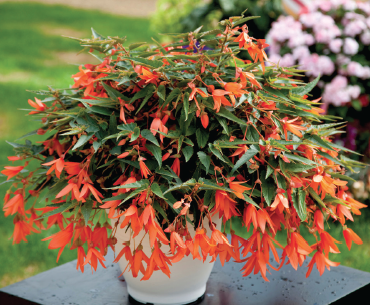The New Old-Faithful Flowers: Learn About the Latest in Annuals
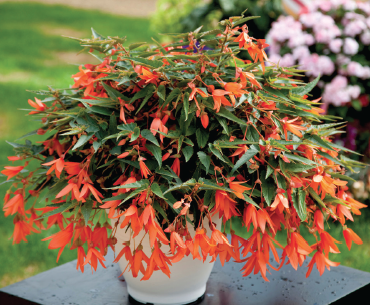
Right after humans learned to cultivate plants, they began experimenting in breeding them in order to get rid of characteristics deemed undesirable. Among the plants today that continue to benefit from this practice are floral annuals—those showy, easy-to-grow favorites that are generally cultivated for their singular warm-weather garden performance, found in many a hanging basket or patio pot.
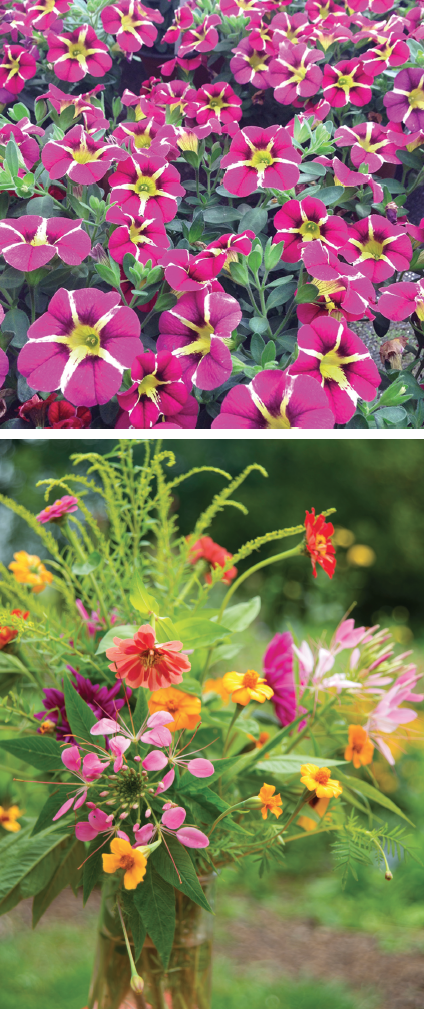 “As times change, growers work to incorporate new varieties into our traditional stand-bys. They add new colors, better heat tolerance, larger sizes, and more resiliency,” says Philip Helbling of Virginia Garden Supply, explaining why there are new versions of old varieties being introduced every year.
“As times change, growers work to incorporate new varieties into our traditional stand-bys. They add new colors, better heat tolerance, larger sizes, and more resiliency,” says Philip Helbling of Virginia Garden Supply, explaining why there are new versions of old varieties being introduced every year.
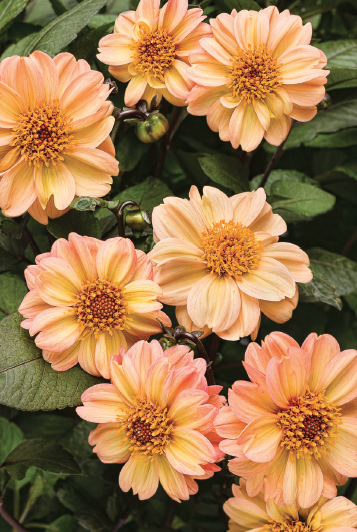 Among Helbling’s favorites being introduced this year are “Caliplosion Purple” calibrachoa, “Dahlightful Georgia Peach” dahlias and the “Bossa Nova” begonias. With elegant cascading leaves and large bell-shaped flowers that come in a variety of bright colors, the Bossa Nova begonia makes for a dramatic addition to a hanging basket, although if Helbling had to choose a favorite from this year’s new offerings, it would be the petunia-resembling calibrochoa. “They give such great color and variations. They do wonderfully through the early spring, but they can struggle during the heat of the summer. If you don’t give up on them, you will be rewarded with their comeback in the fall.” The Caliplosion Purple, with its solid pinkish-purple base and bright yellow center, makes a dramatic argument for hanging on during those hot spells.
Among Helbling’s favorites being introduced this year are “Caliplosion Purple” calibrachoa, “Dahlightful Georgia Peach” dahlias and the “Bossa Nova” begonias. With elegant cascading leaves and large bell-shaped flowers that come in a variety of bright colors, the Bossa Nova begonia makes for a dramatic addition to a hanging basket, although if Helbling had to choose a favorite from this year’s new offerings, it would be the petunia-resembling calibrochoa. “They give such great color and variations. They do wonderfully through the early spring, but they can struggle during the heat of the summer. If you don’t give up on them, you will be rewarded with their comeback in the fall.” The Caliplosion Purple, with its solid pinkish-purple base and bright yellow center, makes a dramatic argument for hanging on during those hot spells.
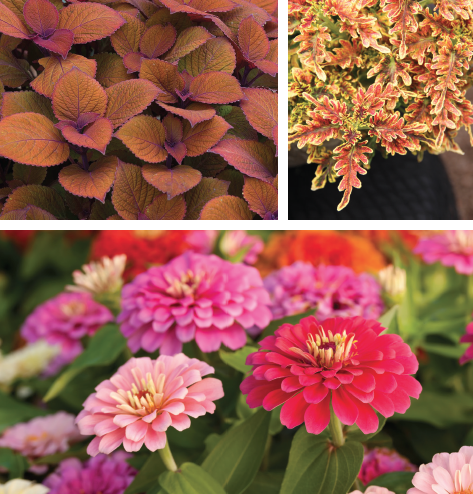 For annuals that attract bees and butterflies, consider the “Painted Red” Bidens with their half red-orange, half yellow blooms that will add color in addition to attracting beautiful butterflies. Favored for their heat-loving, drought-tolerant characteristics, Helbling includes the new Bidens on his list of this year’s favorites. Another annual that adds vibrant color while attracting wildlife are zinnias. Rainfrost Nursery’s Martha Dudley cites the “Uptown Frosted Strawberry” zinnia, a large double flower in shades of pink, among her favorites, as well the new “Luscious Pinkberry” lantana, with its pink and yellow bicolor blooms that are also popular with butterflies. Along with snapdragons, Dudley lists lantana among her favorite annuals in part because they perform so well, calling them “two of the hardest performing annuals I know. I plant them every year and they are diehards—hard blooming and most forgiving when I am late with water.”
For annuals that attract bees and butterflies, consider the “Painted Red” Bidens with their half red-orange, half yellow blooms that will add color in addition to attracting beautiful butterflies. Favored for their heat-loving, drought-tolerant characteristics, Helbling includes the new Bidens on his list of this year’s favorites. Another annual that adds vibrant color while attracting wildlife are zinnias. Rainfrost Nursery’s Martha Dudley cites the “Uptown Frosted Strawberry” zinnia, a large double flower in shades of pink, among her favorites, as well the new “Luscious Pinkberry” lantana, with its pink and yellow bicolor blooms that are also popular with butterflies. Along with snapdragons, Dudley lists lantana among her favorite annuals in part because they perform so well, calling them “two of the hardest performing annuals I know. I plant them every year and they are diehards—hard blooming and most forgiving when I am late with water.”
Both Dudley and Helbling agree on the newest coleus, the often-underrated shade-loving ornamental plant with colorful foliage, as some of the more interesting offerings of the year. Among some of the new varieties this year are “Under the Sea Copper Coral” coleus, with frilly, textured pink, green and cream leaves whose shape resembles the ocean organism. “Campfire” coleus, with its rust-orange color, can be used dramatically in the garden to pair with nearby hues.
“There appear to be a lot of orange and peach shades which I love and which I see folks asking for more and more often. They combine really well with the bright and the soft pinks,” says Dudley, adding, “There truly is nothing like annuals for color in the garden.”
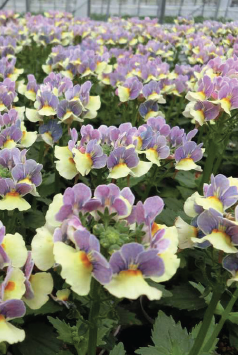 If fragrant is more up your alley, then perhaps consider nemesia. Says Dudley, “Nemesia is a great plant and is usually fragrant. Hopefully the newest cultivar will not disappoint.” With its brilliant orange-hued blooms and tolerance to both cold and heat, the “Sunsatia Blood Orange” nemesia is certain to light up your garden, while the “Blueberry a la Mode” nemesia, with its blue and yellow fragrant flowers, is an ideal alternative to the pansy for a cool-weather flower.
If fragrant is more up your alley, then perhaps consider nemesia. Says Dudley, “Nemesia is a great plant and is usually fragrant. Hopefully the newest cultivar will not disappoint.” With its brilliant orange-hued blooms and tolerance to both cold and heat, the “Sunsatia Blood Orange” nemesia is certain to light up your garden, while the “Blueberry a la Mode” nemesia, with its blue and yellow fragrant flowers, is an ideal alternative to the pansy for a cool-weather flower.
Although there are new plants to choose from every year, it can take some time for the latest and greatest to make their way to local markets. Dudley explains that most independent garden centers source the majority of their annuals from local family owner growers, who don’t always have the newest annuals. It can take some time for large quantities of these newer annuals to become available locally, in part due to the “trial and error” of seeing how new varieties respond to the local environment, says Helbling. Thankfully, there are enough tried and true annuals on offer to keep gardeners content with what is available year after year while keeping our gardens, patio pots and hanging baskets colorful and in bloom all season.
annuals, bidens, bloom, flower arrangements, flowers, growing flowers, helbling, pinkberry, rainfrost
